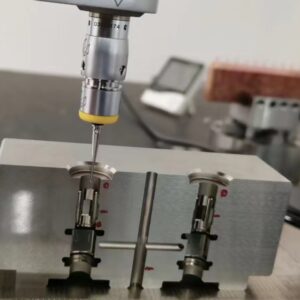Jigs and fixtures are devices that can be used in manufacturing processes with significant accuracy and uniformity. They are useful in increasing efficiency and minimizing cases of error in machining activities. In this article, we will study the difference between jigs and fixtures, their design, and the use that can be made of the two to improve manufacturing processes. It will discuss some of the key guidelines about jigs and fixtures. Besides this, we will discuss their various types, the advantages of their usage, and their design.
Jigs and Fixtures: A Detailed Overview
Jigs and Fixtures are tools utilized in manufacturing operations. They help clamp, support, or maintain the position of a workpiece during machining, assembly, or other industrial uses. They are intended to increase the measures of repeated style, accuracy, and standardization in the procedure. Nevertheless, both jigs and fixtures function for the same purpose, though they have separate duties and attributes.
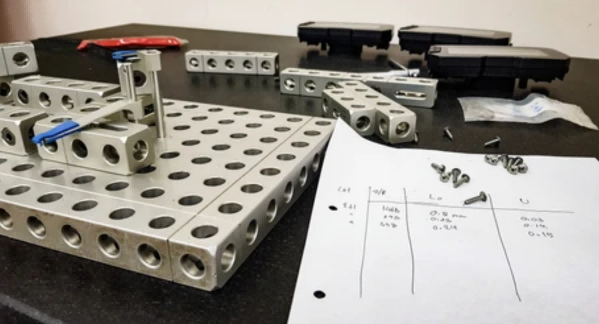
What is a Jig?
A jig is defined as a custom-made tool that is used to secure a workpiece in its proper orientation, It also directs the cutting tool (such as a drill or a saw) when performing some operations on the workpiece. The main purpose of a jig is to guarantee that the cutting instrument accomplishes its operation at the right position and orientation on the workpiece. Besides this, its accuracy is important, especially in operations, i.e. drilling, reaming, and tapping. So, it can even determine the small errors in the final product.
How a Jig Works?
The following is the complete process of how a jig works:
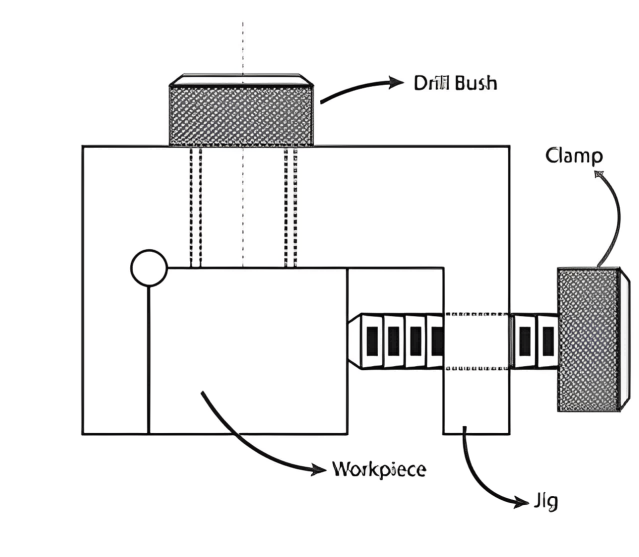
1. Guiding the Tool
A jig is made purposely to direct the cutting tool for instance a drill to the right location on the part. They incorporate guide elements, i.e. the bushings which act as a guide to control the movement and the position of the tool.
2. Holding the Workpiece
In addition to providing correct tool orientation, the jig that accompanies the tool keeps the workpiece in good stead. Besides this, it minimizes any possibility of movement during the machining process which can lead to inaccuracies.
3. Repeating Operations
Special appreciations require jigs, especially in cases where the same hole has to be made on several pieces of ventured materials. That is why, when using a jig proper every operation from the rest is a clone effectively proportional to the previous one.
Types of Jigs
The jig can be of several types, such as:
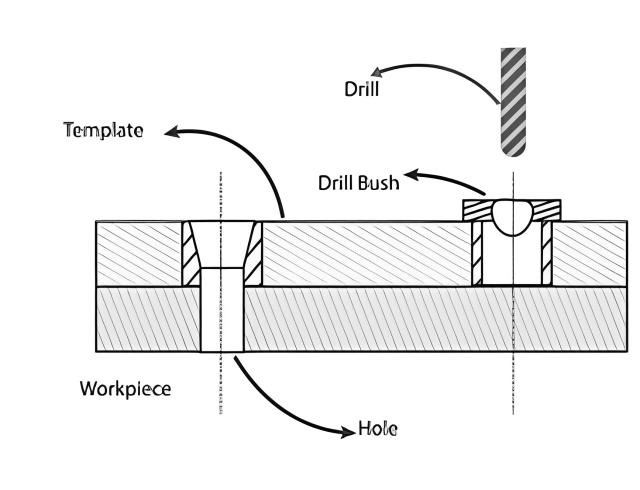
1. Drill Jig
Its main purpose is, descriptive gauge used in a way as to direct a drill bit. So, it can give the right spot on the target material. Besides this, drill jigs can be relatively basic as in the cases of simple operations, or relatively more complicated. They may include bushings that allow the drill bit to be properly aligned on the holes. So, it can avoid misalignment of the holes.
2. Template Jig
It mainly uses a pattern or a template in the form of a profile to control using the cutting tool.
Moreover, the template jig is used especially in operations whereby the same shape or pattern has to be used on different parts of the workpiece. It proceeds to cut along the outline formed on the template side to have a well-formatted cut.
3. Plate Jig
It gives a flat and leveled region also known as the plate. Here, the workpiece is placed during the cutting process. Moreover, the necessity of using plate jigs comes into play for the drilling operations. Here the workpiece has to be clamped on a flat surface. By offering guides or bushing, the jig guarantees that holes are drilled in the precise locations.
4. Angle Plate Jig
The operation carried out on surfaces that are not parallel to the bed of the machine is made possible with the help of an angle plate jig. This type of jig is very important in creating parts shapes that require complicated geometry.
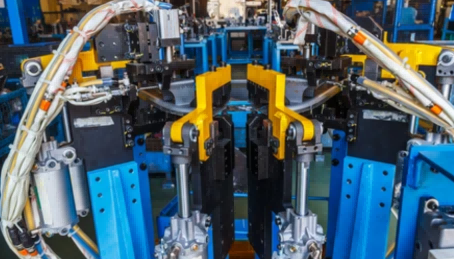
5. Box Jig
A closed facility that encircles the workpiece. It offers stability and the appropriate direction for the cutting tool. Moreover, box jigs are applied where the workpiece in its layout position gives too much additional support. It also can be turned on the opposite side to control the contact part. So, it can be used on different sides to get through the equal side machining.
What is a Fixture?
A fixture is a very rigid tool that is employed to firmly clamp, support, or position a workpiece for machining operation or assembly line. Unlike jigs, fixtures do not control the movement of the cutting tool but ensure proper positioning and clamping of the workpiece. So, it can machine accurately.
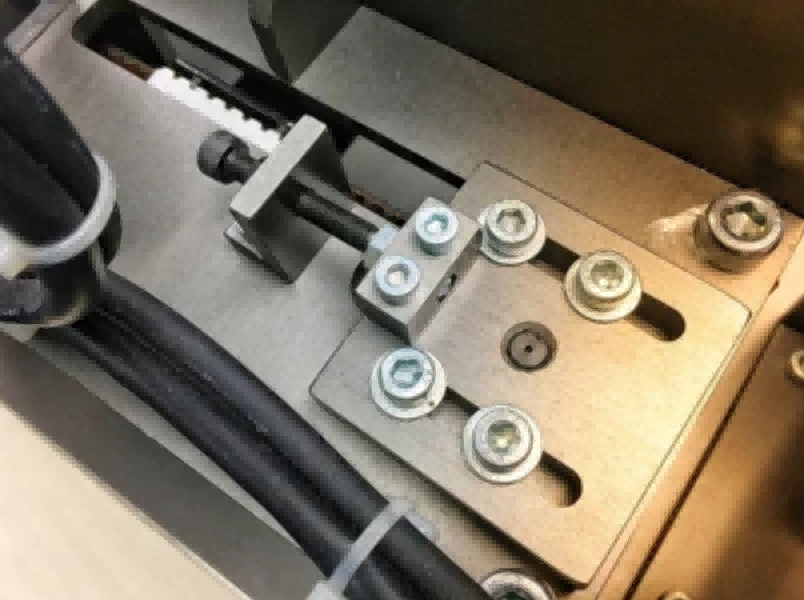
Here the clamping attachments are vital in operations that require anchoring down the workpiece. So that, a milling cutter, lathe, or grinding wheel amongst others can work on the piece. These provide enough stability to the workpiece to prevent it from moving or vibrating during its processing. It can lead to poor machining of the part or actual damage to it.
How a Fixture Works?
Here are some steps of how fixtures work;
1. Holding and Positioning
While a jig has the main task of directing the tool, a fixture is only concerned with proper clamping and positioning of the workpiece during machining. It helps avoid workpiece distortion and wrong orientation concerning the cutting tool.
2. Supporting the Workpiece
They also consist of clamps to avoid the forces of bending or vibrating on the workpiece during several operations that may affect precision.
3. Customization
As they are usually designed for specific parts or operations concerned. They always position the workpiece precisely where it is needed for milling, grinding, or welding-intensive work.

Types of Fixtures
The following are the different types of fixtures;
1. Turning Fixture
It mainly employs lathe work to offer a secure clamping on the workpiece. Besides this, the center stock supports the workpiece and it revolves around the lathe spindle. It helps and guarantees the stability of the workpiece for cutting, shaping, or facing operations in the right position.
2. Milling Fixture
It is mainly manufactured in the form of a stylus enabling its use in positioning the workpiece in a milling machine. Moreover, milling fixtures help in holding and positioning the workpiece on the machine table used in the operation.
3. Grinding Fixture
Here, they temperate utilizes to retain the workpiece during ongoing operations. So, the grinding fixtures are developed to withstand the great forces and infinite accuracy that are typical of grinding processes. They make sure that the workpiece does not move during the process. So, the grinding wheel provides the finish through the removal of the material.
4. Boring Fixture
It has many applications during boring operations which involves widening the holes to the required sizes. Moreover, boring fixtures firmly clamp the workpiece providing the boring tool with the ability to enlarge and complete the required hole. This fixture ensures that distortion occurs to the tools. Hence incorrect hole dimensions do not happen.
Welding Fixture
Purpose: It stabilizes the workpiece during welding processes to prevent it from warping.
Functionality: Welding fixtures are other equipment used to clamp the parts that are to be joined by welding ensuring that they do not move around. They make sure that they fix the pieces in the correct position and that they do not move around since heat generated by welding may lead to distortion of the respective part.
Materials Used for Jigs and Fixtures
The following table explains well the different materials we can use for jigs and fixtures.
| Material | Properties | Typical Applications |
| Mild Steel | – Good machinability
– High strength and durability – Low cost |
– General-purpose jigs and fixtures
– Clamping and supporting elements |
| Cast Iron | – High compressive strength
– Excellent vibration damping – Good wear resistance |
– Base plates and bodies
– Supports and fixtures for heavy-duty machining |
| Tool Steel | – High hardness and wear resistance
– Excellent toughness – High fatigue strength |
– Precision jigs and fixtures where wear resistance is key
– Cutting guides, bushings, and locating pins |
| Aluminum | – Lightweight
– Corrosion resistant – Good machinability |
– Jigs and fixtures for high-speed operations
– Applications requiring easy handling – Aerospace and automotive industries |
| Bronze | – Low friction properties
– Good corrosion resistance – Excellent wear resistance |
– Bushings and bearings within jigs and fixtures
– Components that operate under load |
| Nylon/Plastic | – Lightweight and non-conductive
– Good wear resistance in non-metallic environments – Low cost |
– Fixtures for electrical components
– Soft clamping elements to avoid scratching surfaces |
| Carbide | – Extremely hard and wear-resistant
– High resistance to deformation under load – High thermal stability |
– High-precision drilling jigs
– Cutting guides and bushings |
| High Carbon Steel | – High hardness after heat treatment
– Good wear resistance – Durable under repeated use |
– Locating elements and guide plates
– Bushings and pins |
| Carbide | – Extremely hard and wear-resistant
– High resistance to deformation under load – High thermal stability |
– High-precision drilling jigs
– Cutting guides and bushings |
Jig and Fixture Design Considerations
Make sure to consider the following points for jigs and fixtures design;
- Accuracy and Precision: Make sure that the designed product satisfies the required tolerance.
- Ease of Use: It is widely used for loading, offloading, and the usage of the machine in general.
- Material Selection: The right combination of strength, weight, and durability needs to be focused during material selection.
- Tool Accessibility: They should guarantee access to the workpiece for tools without any interference from other parts.
- Safety: Provide a safe design to ensure maximum protection of the operators.
- Cost-Effectiveness: Striking balance between the aesthetics of the design and the cost that comes with the design.
Main Elements of Jigs and Fixtures
While discussing the concept of jigs and fixtures. It is important to understand the key elements of jigs and fixtures. These are as follows;
- Locating Elements: Make sure that the workpiece is well positioned.
- Clamping Elements: It should be ensured that the workpiece is firmly secured when it is operational.
- Guiding Elements: Position of the tool(for jigs) over the workpiece.
- Supporting Elements: There is also a need to ensure that the workpiece is constricted from deflecting during the entire process.
- Base or Body: The base or substructure either of the jig or the fixture on which all the components are mounted.
Difference Between Jig and Fixture
The following table helps us understand the difference between a jig and a fixture briefly.
| Feature | Jig | Fixture |
| Function | Guides the cutting tool | Holds and locates the workpiece |
| Tool Guidance | Yes | No |
| Application | Primarily used in drilling, reaming | Used in milling, turning, grinding |
| Complexity | Generally more complex | Less complex compared to jigs |
| Cost | Typically higher due to complexity | Generally lower compared to jigs |
Advantages of jigs and fixtures
Here are some advantages of jigs and fixtures;
- Increased Production Rate: Reduces the time taken in the production process.
- Enhanced Precision: Helps sustain accuracy in that no deviations from the right dimensions are likely to occur often.
- Reduced Labor Costs: This means that the high level of skilled labor required in house construction is considerably reduced.
- Improved Safety: It helps to clamp and hold workpieces and tools thus minimizing accidents.
- Higher Quality Products: When there is adherence to the system then the quality of the output is consistent.
Disadvantages of jigs and fixtures
So, the following are the limitations of jigs and fixtures
- High Initial Cost: The processes involved in the creation of the jigs and fixtures can at times be costly.
- Maintenance: Maintenance is necessary to ensure that measurements are correct. Besides this, they guarantee that they are frequently used in fieldwork.
- Limited Flexibility: Designed to fit a certain occupation, and not very flexible.
- Design Complexity: It demands professional design and numerical computations in the framework.
Applications of Jigs and fixtures
Jigs and fixtures may be defined as tooling arrangements used in manufacturing industries to improve production efficiency and consistency.
- Automobile Manufacturing: It is widely used to assemble various components and machining parts.
- Aerospace Industry: Closely controls the production to give accuracy in the parts used to make an aircraft.
- Electronics Industry: Applied in electrical connectors used on the connection of circuit boards and their parts.
- Woodworking: They work for several operations, i.e. cutting, drilling, and joining of wooden parts.
- Metalworking: Applied in milling process, turning, grinding, and drilling.
Conclusion
In conclusion, jigs and fixtures enable product development, improve efficiency, and minimize potential errors in selecting the materials and design components. This is ultimately a good option in the production lines. So, it is important to know their types, functions, and the materials used to make manufacturers. Besides this, the knowledge of managing their operations with great efficiency and getting the desired level of precision.
Frequently Asked Questions
Q1. What is the main difference between jigs and fixtures?
A jig controls the tool and a fixture locates and clamps the workpiece.
Q2. Why are jigs and fixtures important in manufacturing?
They reduce errors while introducing standards and structure in their production. Hence, they help increase the overall production.
Q3. What materials are commonly used for jigs and fixtures?
These are mainly cast iron, steel, aluminum, bronze, and several types of plastics.
Q4. What processes can be followed to design a jig or a fixture?
While deciding on the design factors some of the factors taken into consideration. These may include; accuracy, simplicity of design, type of material, accessibility, and availability of tools, safety concerns, and cost control.


